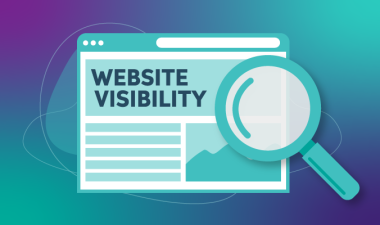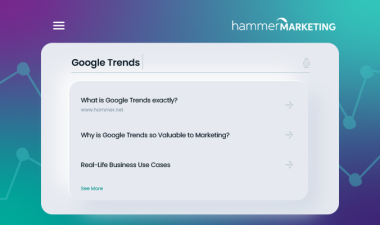In July of last year, Google transitioned website owners from its widely-used Universal Analytics (UA) platform to its next-generation Google Analytics 4 (GA4) – an effort to keep pace with evolving privacy regulations and user expectations.
GA4 reviews so far have been mixed. As they’ve adjusted to GA4 (often begrudgingly!), many businesses have taken solace in and taken advantage of Google’s UA grace period: For one year from July 1st, 2023, Universal Analytics historical reporting data remains available through the classic UA interface, allowing website owners access to insights on user behavior and website performance as far back as 2005. Because this UA data would be available for one more calendar year, many businesses opted not to export it when the initial shift to GA4 took place last July – nor have they exported it since.
Like all once-distant deadlines, though, this one is rapidly approaching.
On July 1st, 2024, Google will permanently delete all UA data for good. Any data not backed up by June 30th will no longer be accessible or retrievable.
With the clock ticking, many businesses who haven’t yet exported their UA data are debating whether it’s worth the lift – a question whose answer is less than straightforward, for several reasons.
AN ARGUMENT FOR EXPORTING UNIVERSAL ANALYTICS DATA
COVID upended the world in early 2020, altering users’ digital behavior (seemingly irreversibly, in some regards) in the process.
As such, many data analysts consider 2019 the last year of “normal” data indicative of pre-COVID 21st century human habits; they ongoingly use and refer to these pre-2020 metrics as a benchmark for measuring comparative user behavior moving forward.
All of which complicates the migrate-or-not-migrate decision.
Businesses who lose their pre-2020 data lose their ability to examine how user behavior has shifted since COVID. In a world where marketing and larger business decisions are increasingly data-driven and data-centric, first party data predating this worldwide event is considered invaluable by many, as it can be analyzed and leveraged moving forward.
But pre-COVID insights aren’t the only reason to consider exporting UA data. Five-year reporting snapshots are a common and widely recommended business practice. These year-over-year comparisons won’t be possible again until 2027 for businesses that don’t export UA’s pre-July 2023 insights.
AN ARGUMENT AGAINST EXPORTING UNIVERSAL ANALYTICS DATA
Some business owners and experts, meanwhile, feel pre-COVID data is moot. They hold that shifts in user behavior have been so seismic and enduring that data before 2020 offers little to no current value. Some feel that changes in Google algorithms in recent years also render older analytics data useless.
Others might see the value of historical UA data, but lament the effort involved in exporting and storing it – which, for businesses who handle an export on their own, involves building a dashboard to visualize the data after it’s been transferred off of UA and stored.
WHAT UA DATA EXPORT ENTAILS
Google offers two primary methods for exporting and saving UA data set to disappear on July 1st:
- BigQuery export. Available for Google Analytics 360 users, this option facilitates a seamless transfer of data directly from UA to BigQuery – Google’s managed, serverless data warehouse product, which also offers data analysis. Unfortunately, most website owners don’t use Google Analytics 360 which makes the automatic Big Query option unavailable.
- Alternative methods – which are limited. Non-Google Analytics 360 users face a more limited path for backing up their Universal Analytics data to BigQuery, which is the foremost storage option.
One approach involves enlisting an in-house developer familiar with the Google Cloud Platform (GCP) ecosystem; this expert can utilize the Google Analytics Reporting API to extract and export UA data to BigQuery (or another storage option of choice).
For users less comfortable with technical complexities, a viable alternative exists in the form of third-party data transfer resources, experts, and tools. Companies like ours offer data migration services specifically designed to bridge the gap between Universal Analytics and BigQuery.
STILL NOT SURE?
With July 1st data deletion fast approaching, it’s now or never for jumpstarting your data export. If you’re still on the fence, here are some factors worth considering and ideas for helping you decide:
- Access and assess your UA data. Pinpoint the historical data points from Universal Analytics that might be integral to future analysis, marketing, and business growth. This could include website traffic trends, user behavior metrics, and conversion data. Engage in internal discussions about whether these might have a place in marketing strategies moving forward.
- Get a free Universal Analytics assessment. Unsure what it would cost to outsource a UA data export? A Hammer Marketing Universal Analytics assessment offers a rate, timeline, and proposed process for migrating and preserving data on your behalf. Just remember, time is of the essence. To meet the July 1st deletion deadline, an assessment should start no later than NOW!
- Looker Studio: To visualize your historical Universal Analytics data before storing it, tap Looker Studio. Though it does require a bit of setup to connect the data and build out the dashboards, Looker Studio is the leading option, and can be further developed to provide insights from your data.
While we’d never fear monger, we encourage businesses to consider this critical UA data impasse carefully – and ASAP. The easiest option? The no-cost Universal Analytics assessment from Hammer Marketing. Variables including traffic volume and your website’s complexity play a part in determining the right solutions for exporting and storing your Universal Analytics data, and the rate.
Our team can lay this all out for you following the no-obligation discussion and review. Contact us to schedule your free Universal Analytics assessment today!

Going, Going, Gone: Backing Up Universal Analytics Data Before It Disappears on July 1st
In July of last year, Google transitioned website owners from its widely-used Universal Analytics...

Mid-Market Companies, Behold: 5 In-Reach Strategies for Enhancing Website Visibility
Let’s step back in time, shall we? To the early aughts, when websites were...

Google Trends: Digital Marketing’s Most Underrated Upper Hand
Google’s market dominance is no secret. The search engine receives eight and a half...

SEO: The Long Game Worth Playing
A few years ago, Hammer Marketing signed a client facing a nagging problem: They...

Google’s Helpful Content Algorithm System Rolls Out a September Update
For just about any SEO strategist, and likely any company with a website, an...

Overwhelmed by Social Media? Six Ways to Up Your Game.
Algorithms and analytics and AI chatbots, oh my! No wonder small and medium-sized businesses...


